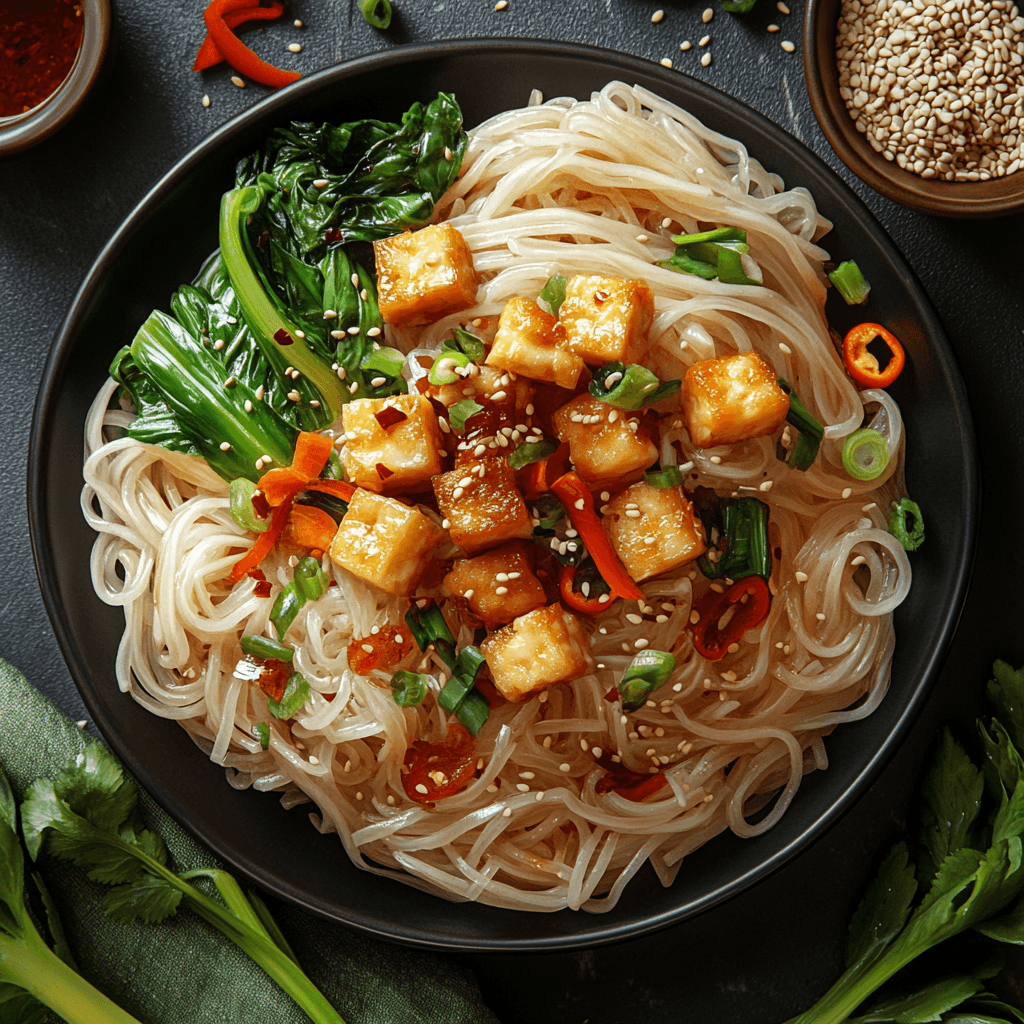Rice noodles are a versatile ingredient used in many Asian cuisines, from stir-fries to soups. As a gluten-free alternative to wheat noodles, they provide a delicious, light option for various dishes. Whether you’re looking to make a quick Pad Thai or a comforting bowl of Pho, understanding how to select and cook the right type of rice noodle is essential.
What Are Rice Noodles?
At their core, rice noodles consist of two simple ingredients: rice flour and water. These noodles are naturally gluten-free, making them a great choice for those with gluten intolerance. Unlike wheat noodles, they tend to be softer and can easily become mushy if overcooked.
For those interested in pairing these noodles with flavorful sauces, check out this recipe on how to make a delicious garlic herb butter. The rich, buttery flavor can elevate any stir-fry dish.
Types of Rice Noodles
Rice noodles come in various forms, each with a specific use in different dishes. Here are some popular types:
- Dried
- Rice vermicelli: Thin noodles often used in soups or light stir-fries.
- Medium noodles: Commonly found in Pad Thai and other Southeast Asian dishes.
- Large rice noodles: Perfect for stir-fried dishes like Pad See Ew.
- Fresh
- Ho Fun noodles: Wide, fresh noodles commonly used in stir-fries.
- Vacuum-sealed fresh noodles: These are semi-dried and can be quickly prepared for soups or stir-fries.
If you’re looking for more meal inspiration, you might enjoy this recipe for garlic butter chicken, which pairs well with a serving of fresh or dried.
Popular Dishes Featuring Rice Noodles
Whether stir-fried or served in a broth, rice noodles are the star of many iconic dishes. Here are a few:
- Pad Thai
A classic Thai dish that uses medium-sized rice noodles, stir-fried with shrimp, tofu, and a tamarind sauce, giving it a perfect balance of sweet, sour, and savory flavors. - Pho
This Vietnamese noodle soup often features small these noodles immersed in a rich, fragrant broth made from beef or chicken bones. The broth is the key component, while the noodles act as the perfect vehicle to soak up all the flavors. - Pad See Ew
Stir-fried with soy sauce, Chinese broccoli, and wide rice noodles, this dish is hearty and satisfying, offering a chewy texture with a savory, smoky flavor.
Cooking Tips for Rice Noodles
Getting the texture right when cooking these noodles is crucial to avoid turning them into a mushy mess. Here are a few important tips:
Soaking vs. Boiling
- Soaking Dried Noodles: Most these noodles should be soaked rather than boiled to avoid overcooking.
- Rice vermicelli: Soak for 5-15 minutes.
- Medium noodles: Soak for 20-30 minutes.
- Large noodles: Soak for 90 minutes to 2 hours.
Stir-Frying Techniques
When stir-frying, such as in Pad Thai or Pad See Ew, add soaked noodles directly into the pan and stir-fry over high heat. Use a wooden spatula to prevent the noodles from breaking apart.
Blanching for Soups
For dishes like Pho, blanch the noodles in boiling water for just a few seconds before adding them to the soup. This helps keep them firm and prevents them from absorbing too much broth, which can make them soggy.
Health Benefits
Beyond their versatility, these noodles are a healthy option for those looking to maintain a balanced diet. Here are some key benefits:
- Gluten-free: Suitable for those with gluten intolerance or celiac disease.
- Low in fat: Unlike many wheat-based noodles, rice noodles are naturally low in fat and cholesterol.
- Low calorie: Offering a lighter alternative to pasta, these noodles are ideal for those watching their calorie intake.
Pairing rice noodles with nutrient-rich ingredients like vegetables and lean proteins can create a well-balanced meal. For instance, you could try a comforting smothered chicken and rice dish for a wholesome dinner option.
FAQs About these noodles
- How long should I soak rice noodles?
The soaking time depends on the size of the noodle. For rice vermicelli, a 5-15 minute soak is sufficient, while larger noodles may require up to 2 hours. - Why do my these noodles turn mushy?
Overcooking or boiling the noodles for too long can cause them to become mushy. Instead, soak them in water and cook them briefly in the pan or broth. - Can rice noodles be reheated?
Yes, rice noodles can be reheated. It’s best to reheat them gently by steaming or quickly tossing them in a pan to avoid overcooking. - Are rice noodles healthier than wheat noodles?
these noodles are generally lower in fat and calories than wheat noodles. They’re also gluten-free, making them a healthier option for those with dietary restrictions. - How can I prevent noodles from sticking during cooking?
To prevent sticking, cook the noodles in small batches and stir-fry them over high heat in a well-oiled pan. Be sure to separate fresh noodles before adding them to the pan.
Conclusion
Whether you’re preparing a quick stir-fry or a comforting bowl of soup, these gluten-free noodles are the perfect base for a variety of dishes. With their soft texture and neutral flavor, they can easily adapt to whatever you pair them with, making them a pantry essential for any home cook.

